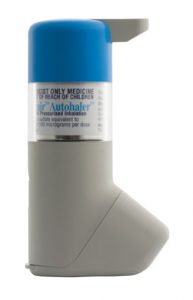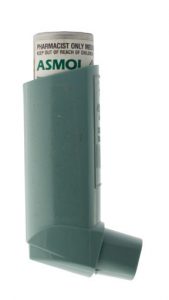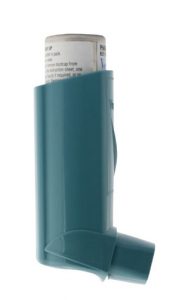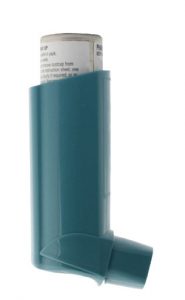Relievers
Other names: Short Acting Beta Agonists (SABA), Short Acting Bronchodilators
Includes medicines such as Airomir, Asmol, Bricanyl, Ventolin, and Zempreon. Generic names here: Active Ingredients Guide for Asthma Medication.
HOW DO RELIEVERS HELP ASTHMA?
Relievers are fast-acting medicine that quickly relieve asthma symptoms like coughing, wheezing, being short of breath and a tight chest. They help to relax the muscles that are squeezing tight around the outside of the airways.
It is your Asthma First Aid medicine.
Everyone with asthma should always have a reliever medicine handy.
They work within minutes and can last for up to four hours.
Relievers can sometimes be used 15 mins before an activity or sport to help prevent asthma symptoms. Ask your doctor to include this on your Asthma Action Plan if this is right for you.
HOW OFTEN ARE YOU USING YOUR RELIEVER?
Relievers are an important medicine used to relieve your asthma symptoms. However, it’s important to know if you are using it too much.
If you are using your reliever more than two days per week or finishing three or more reliever puffers in one year your asthma could be poorly controlled, increasing your risk of an asthma attack.
WHY CAN’T I JUST USE MY RELIEVER PUFFER?
If you only use a reliever to treat your asthma, you are treating the symptoms but not the cause. This means your airways are more likely to react to triggers and are not protected from the increased risk of an asthma attack. People who rely too much on their reliever have a higher chance of severe and even life-threatening asthma attacks.
If you can relate to any of this, talk to your doctor about the possibility of being prescribed an asthma preventer.
A preventer will treat your underlying inflammation and sensitivity. Most people with asthma can lower their reliever use and maintain good asthma control by using a preventer.
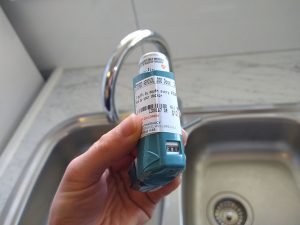

DOSE COUNTERS ON RELIEVER PUFFERS
Relievers have dose counters allowing you to check how many puffs you have left. Writing the date on the canister helps you track how long your puffer lasts. Puffers (metered dose inhalers) with a dose counter are more sensitive to blockage, so it is important to clean your puffer weekly to keep it working.
View cleaning instructions here for Asmol, Ventolin, and Zempreon
SIDE EFFECTS OF RELIEVERS
Side effects of relievers may include:
- Head/mood
- Headache
- Agitation
- Restlessness
- Muscles/joints
- Feeling shaky (tremors)
- Tense
- Heart/metabolism
- Increased heart rate
- Palpitations
- Stomach/gut
- Nausea







